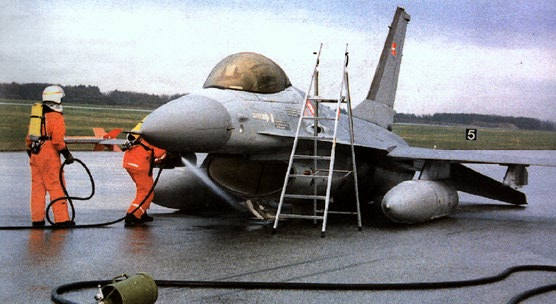
|
F-16 Fleet ReportsAir force total F-16 attrition rate |
Data
This graph shows the F-16 attrition rate for the different air forces operating the Fightng Falcon. The attrition rate is calculated as the fraction of the total fleet that is lost due to attrition over all years, in percent. Whereas the previous graph compared absolute attrition numbers, this graph allows different airfrorces to be compared. The different air force have been color coded, representing the number of years a particular air force has been operating the F-16s. Note that our attrition data for Israel and Egypt is incomplete.
Disclaimer: This report is generated in real-time from our F-16 Aircraft Database. We strive to keep our database up-to-date and complete, nevertheless for some countries data is hard to verify (e.g. accuracy for the Middle East is only 90%). Please contact us if you have any questions or feedback.
- Horizontal Axis: The different air forces operating the F-16
- Vertical Axis: F-16 attrition rate as fraction of the total fleet
- Series: The different colors represent the number of years air forces have been flying the F-16, segmented in 5-year blocks
Analysis Danish attrition is near the fleet average, which is quite an achievement since they operate the F-16 since 1980. In the group with above-average fleet attrition, we indeed find the long-term F-16 operators like the US Air Force and the four original European Participating Air Forces: Belgian Air Force, Royal Netherlands Air Force, Royal Danish Air Force, and Royal Norwegian Air Force. These all have between 25 and 35 years of operations with the F-16 (note that for the USAF, "operations" are used in the broadest sense of the word - including the early flight tests with the YF-16 and FSD aircraft). Three of the 4 EPAF nations occupy the top-3: Norway lost 23% of its F-16 fleet to attrition, Belgium 20.5%, and the Netherlands 17%. For all three air forces, the F-16 represented a quantum leap in technology as it replaced the F-104 Starfighter fleets. This is often cited as a contributing factor to the higher attrition rates for these air forces, although we have no data to quantify this. Of particular interst in the high group is the Italian Air Force (AMI), which lost nearly 15% of its F-16s to attrition, despite being one of the younger F-16 operators (Italy first started flying its leased F-16 ADF aircraft in 2000). The group with below-average attrition contains the younger F-16 operators, as can be expected. The only notable exception is Israel, but since our attrition data for Israel is incomplete we expect the actual attrition rate for Israel to be significantly higher. This graph doesn't allow for easy comparison of attrition rates between air forces, since long-time operators have a higher overall attrition than short-time operators. In the next graph we'll remove this impact by using the average annual attrition as a key metric. |
|
Note: Errors and omissions in the above text can be added here. Please note: your comments will be displayed immediately on this page.
If you wish to send a private comment to the webmasters, please use the Contact Us link.
